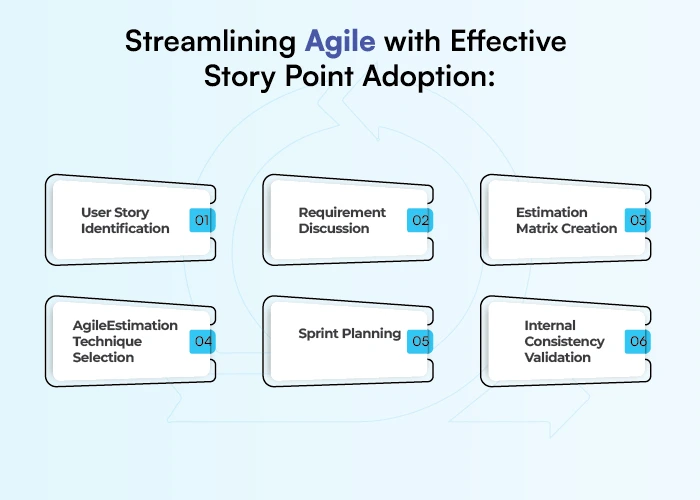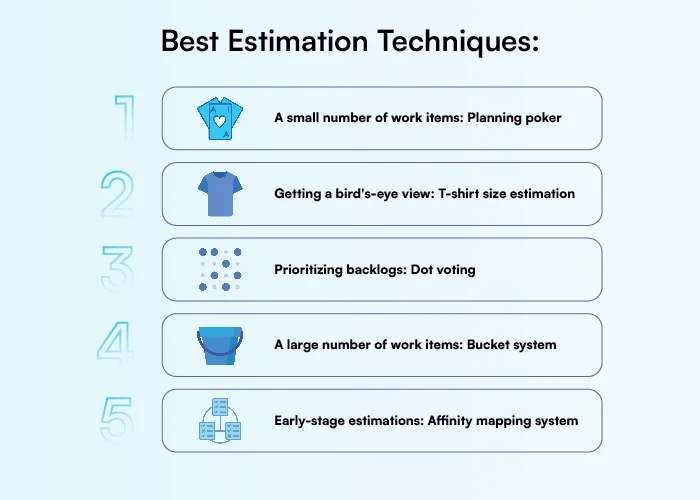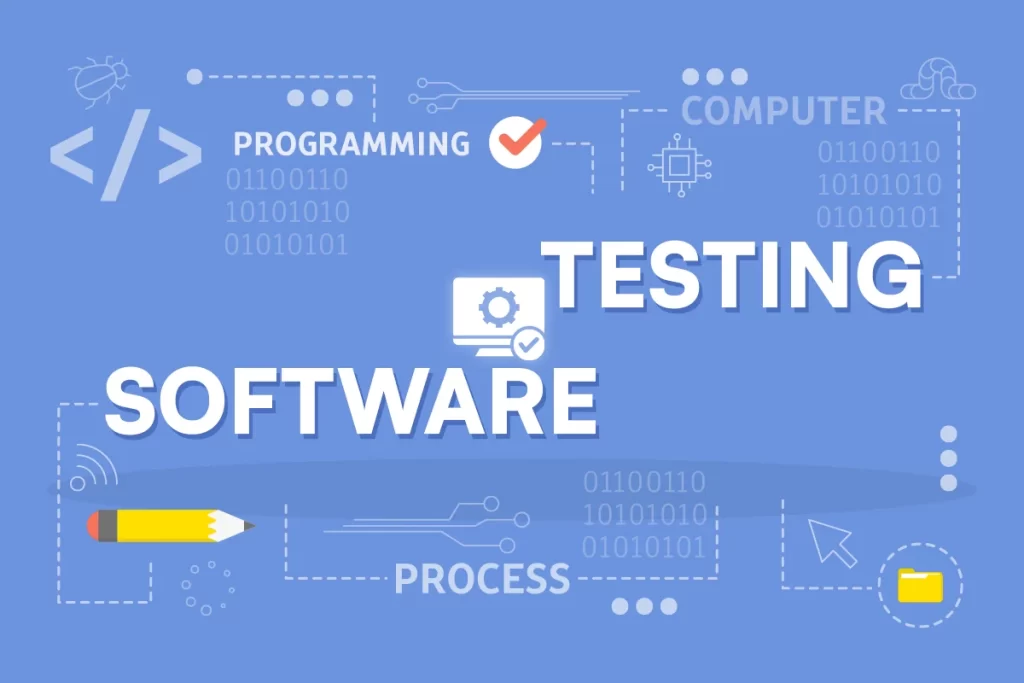Test estimating in software development refers to the ways and approaches used to determine or evaluate the efforts, resources and timelines required for testing in software development projects.
What is software test estimation?
Software Development test estimation is a managerial task involving assessing and approximating the necessary time, resources, and costs for executing tests in a specific environment. Additionally, it serves as a projection, preventing time constraints and avoiding exceeding budgets.
Why test estimation?
Key reasons for conducting test estimation
Facilitating Project Planning:
Accurate estimations helps project managers to maintain a well-organized project timeline. By having a clear understanding of the time required for testing activities, realistic schedules can be developed, ensuring effective coordination with development and other project tasks.
Efficient Resource Allocation:
With reliable test estimations, resource allocations, such as the testing tools in software testing, number of testers and required testing environments, can be handled with precision. This ensures that resources are neither overallocated nor underutilised.
Effective Budgeting and Cost Control:
The success of a project depends on the effective management of budgets. Effective management requires the evaluation of many expenses like infrastructure costs, personnel costs, and tooling costs. Having a good understanding of the expected expenses, organisations can make better budget decisions.
Proactive Risk Management:
Estimations provide visibility into potential risks associated with testing, allowing for proactive implementation of risk mitigation strategies. This ensures that areas requiring additional attention or resources are addressed promptly.
Aligning Stakeholder Expectations:
Estimation sets true expectations with project stakeholders, fostering clear communication with clients, managers, and development teams.
Optimizing Projects:
Accurate estimation facilitates better planning and optimization of testing activities. It identifies opportunities for process improvements, resource optimization, and automation, leading to increased productivity in the testing process.
What To Estimate?
Estimation techniques are undertaken to assess various factors of software development. These techniques are used in knowing the time, resources, efforts, and expenses associated with different components of a project.
1. To begin with, estimation techniques allow for the evaluation of the effort needed for diverse activities such as analysis, design, coding, testing, documentation, and project management.
2. These techniques prove valuable in determining the time required to accomplish the entire project or specific milestones, taking into account dependencies and constraints.
3. Estimation techniques are helpful in the assessment of necessary resources including tools, team members, skillsets and infrastructure.
4. Moreover, these techniques can be applied in estimating the complex features, potential risks, and uncertainties and also measure the effort needed for documentation and project tasks.
Test Estimation Techniques
Common and Widely Utilized Test Estimation Techniques
1. Work Breakdown Structure:
This involves breaking down a large task into smaller, more manageable groups for easier execution.
2. 3-Point Software Estimation Test:
Tasks are dissected into smaller components, and each is estimated using three points – Best case, Most likely, and Worst case scenarios.
3. Wideband Delphi Method:
This technique brings together a panel of experts to collectively determine the most probable outcome, reaching a common consensus.
4. Functional Point Analysis:
Breaking down extensive tasks into smaller components, with each small task estimated based on factors like size, cost, and project duration.
5. Agile Techniques:
Agile estimation techniques utilize current data and past experience for estimation, continuously integrating new information into the project to enhance the estimation process.
6. Distribution in Percentage:
Each stage is evaluated in terms of percentages to determine the effort allocation for each phase of the testing cycle.
Insights about Agile Estimation – Benefits and Successful Story Points
Agile estimation involves gauging the effort needed to complete a prioritized task within the product backlog. This estimation is focused on determining the time required for task completion, enhancing the accuracy of sprint planning.
Teams engage in Agile estimation for several reasons. Overestimation and underestimation are common challenges in Agile software development companies, resulting in unpredictable development and launch times. Early consideration of Agile estimation is essential for achieving accurate user story estimations. This practice ensures that the team remains focused on deliverables and avoids unnecessary deviations.
Here are some benefits of Agile Estimation techniques
Informed Decision-Making
Accurate Agile estimation empowers the development team to conduct effective backlog grooming sessions, leading to precise sprint planning. Informed decisions based on reliable estimates contribute to improved user story delivery times.
Enhanced Coordination
Agile estimation facilitates better coordination within the team. For instance, when user story A is estimated at two weeks and user story B at four weeks, interdependencies between the two stories necessitate careful prioritization, ensuring simultaneous completion and fostering improved teamwork.
Effective Risk Management
Agile project estimation is a key component in mitigating risks associated with budget and timeline overruns. Accurate estimates, including story points, enable teams to adhere to budgets, timelines, and project scope, reducing the risk of delays and ensuring on-time, quality delivery.
Agile estimation, when executed thoughtfully, not only addresses challenges related to overestimation and underestimation but also contributes to the overall success of software projects. It provides teams with the necessary tools to make informed decisions, enhance coordination, and effectively manage risks throughout the development process.

Streamlining Agile with Effective Story Point Adoption
Successfully employing story point estimation in Agile involves a systematic process leveraging historical data for accurate project assessment.
The sequential steps for Implementing this estimation technique are as follows:
1. User Story Identification:
Begin by identifying user stories that encapsulate the project’s features. The Product Owner or business analyst plays a crucial role in discussing the story requirements and clarifying any uncertainties surrounding the story’s content.
2. Requirement Discussion:
Engage in comprehensive discussions about the user story requirements. The Product Owner or business analyst takes on the responsibility of responding to queries and providing a clear understanding of the story’s essence.
3. Estimation Matrix Creation:
Develop an estimation matrix, a numeric scale used to assess the chosen pieces of work. This scale could be based on the Fibonacci sequence (e.g., 5, 8, 13, 21, 34) or a straightforward linear scale (e.g., 3, 4, 5, 6, 7). The matrix serves as a reference point for evaluating the complexity of each task.
4. Agile Estimation Technique Selection:
Choose an Agile estimation technique that aligns with the team’s preferences and the project’s specific requirements. Whether using Planning Poker, T-Shirt Sizing, or other methods, select the most suitable approach for your team.
5. Sprint Planning:
Implement sprint planning based on the estimates derived from the chosen Agile estimation technique. This phase involves allocating tasks to specific sprints and creating a roadmap for project execution.
6. Internal Consistency Validation:
Throughout the process, validate that the estimates maintain internal consistency and align with the respective user stories. This ensures that the estimation framework remains reliable and accurately reflects the complexities of the tasks.
By following these steps, teams can effectively leverage story point estimation in Agile, utilizing historical data to enhance the precision of project estimates. This method not only streamlines the planning process but also promotes better alignment between estimations and the actual execution of user stories.

Test estimation best practices
Test estimation stands as a pivotal element within the software development cycle, playing a crucial role in effective planning, resource allocation, and overall project management. To ensure precision and reliability in the estimation process, consider the following best practices:
1. Thorough Understanding of Requirements:
Before initiating the estimation process, it is imperative to possess a comprehensive understanding of the project requirements. Any ambiguities or incomplete information may lead to inaccuracies in the estimates.
2. Breakdown of Tasks:
Rather than providing a singular estimate for the entire project, break down the testing effort into smaller, more manageable tasks. This approach enhances precision in estimation and mitigates the risk of overlooking crucial aspects.
3. Historical Data:
Leverage historical data to expedite and enhance the estimation process. Previous projects with similar scopes and complexities can serve as valuable reference points, offering insights into the testing effort required.
4. Working with Right Experts:
Seek input from team members who have experience with similar story estimations. Involving experienced testers, test leads, and other stakeholders can significantly improve the accuracy of estimates.
5. Employ Estimation Techniques:
Select and apply the most appropriate estimation technique based on the unique characteristics of the project. Some examples are selenium testing and agile methodology in testing. Tailoring the approach to the project’s specific requirements enhances the accuracy of estimates.
6. Consider Risk Factors:
Identify potential risks that may impact testing efforts early in the process. Allocate additional time to accommodate unforeseen issues that could arise during testing.
7. Account for Environment and Infrastructure:
Ensure that the estimation accounts for the time required to set up and maintain the necessary test environments, tools, and infrastructure.
8. Review and Validate:
Seek a fresh perspective by having someone else review the estimations. This external input can contribute to more accurate estimations by identifying any oversights.
9. Update Estimations:
As the project progresses and more information becomes available, periodically reassess and update the estimates. Document the reasons for any adjustments made to the original estimation.
10. Track and Learn:
Maintain a record of the actual time and effort expended on testing activities, and compare this data with the estimated values. Analyze any discrepancies to derive insights that can be applied to enhance future estimations.
Caution
Keep in mind that estimation is not an exact science, and unexpected situations can influence the actual effort needed. It’s essential to regularly review and modify the estimates as the project advances to ensure a successful testing phase.
Conclusion
Test estimation techniques aren’t limited to software testing; they offer value throughout the entire software development life cycle. By combining the mentioned methods, a more accurate and precise estimation can be achieved. Ensuring accurate estimates for any project is crucial for optimizing the use of resources, time, and skills to their fullest potential.




